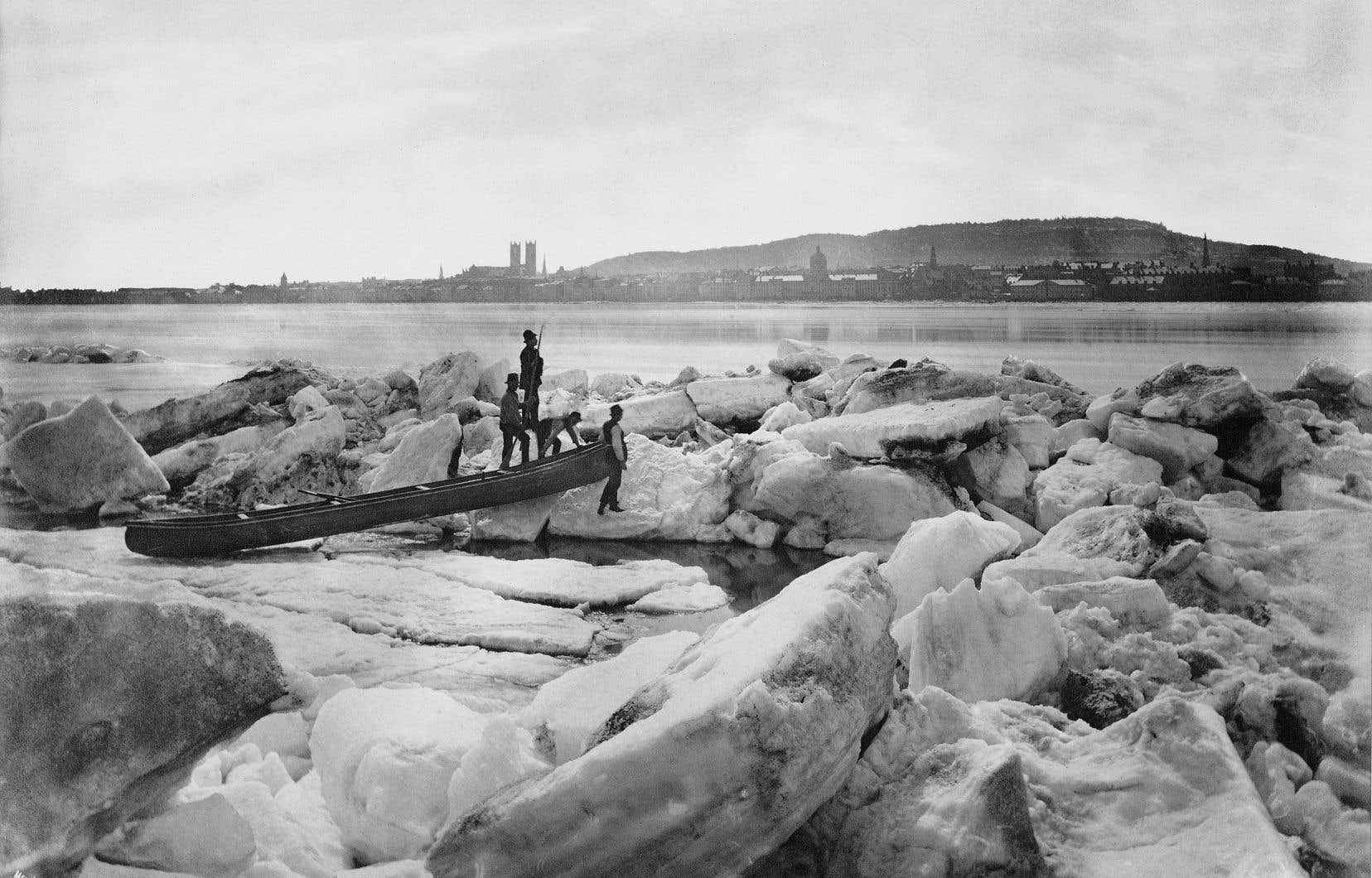On the fragile albumen paper that lines the rooms of the McCord, a history of Quebec is revealed: that, in black and white, of the wooden houses that were erected in the streets of Saguenay in the 19e century, that of the Innu who lived in tents near Mingan, and that of ice-cutting activities on Île Sainte-Hélène, near Montreal.
These photos of Alexander Henderson, to whom the McCord Museum is devoting the retrospective alexander Henderson. art and nature, both historians and photographers cherish them. And yet, the man remains largely unknown to the general public.
Arrived in Montreal from Scotland with his new wife in 1855, this trained accountant, from the Scottish lower middle class, found here the perfect ground to practice his art. Free of fortune, passionate about hunting and fishing, he photographed Quebec, especially, but also Canada, as he pleased.
It was in the company of another, better-known Scottish photographer, William Notman, that Henderson learned the basics of photography in Montreal. While Notman specialized in portraiture, Henderson was passionate about landscapes, particularly winter landscapes, which he rendered in all their glory. The two men belong to the small group, of which only a French Canadian was a member, which founded the Art Association of Montreal, which has since become the Montreal Museum of Fine Arts.
He does photography in the European way, mixing romanticism and the picturesque, explains the museum’s outgoing photography curator, Hélène Samson. For her, Henderson practiced his art with a colonial eye, inspired by the European currents of the time, but also seeking recognition there rather than here. He will also win several landscape photography awards.
“He has his own mentality, he’s someone who was trained in Scotland and who is coming here, to a colony of the British Empire,” she said. He looks at the Canada he arrives in with British settler glasses. And then, it is also a colonial art, because its manner, its style, its compositions are quite characteristic of European art. His artistic references are European. […]. And he first seeks recognition in Europe. »
However, here, his photos are taken as close as possible to nature. The canoe, made by Aboriginal people, is one of his favorite subjects, and his photos document several river portages made by Aboriginal people. Frequenting the Canadian upper class, Henderson took a trip on the Molsons’ yacht, and thus visited the Lower North Shore, with its isolated villages. He makes striking winter landscapes. Like people climbing the Sugar Loaf, in front of the Montmorency Falls, or practicing sliding activities on Mount Royal. A whole series of photos is about frost.
A missing backdrop
Revealing another era, his photos allow a layer of history to take shape before our eyes, like a vanished backdrop of contemporary Quebec.
In love with Turner and Wilson, Henderson is also characterized by his technical knowledge. Centuries before Photoshop, he superimposed negatives so that we could see clouds in a place where the brightness of the sky did not allow it on a single negative.
Most of the photos presented in this exhibition are modest in size. In fact, they are the size of the negative, since the artist did not have enlargement equipment at the time. Moreover, all the negatives of his work have been destroyed, which makes his period photographs even more precious.
The 200 objects that make up the exhibition, including 140 photos, come mainly from the museum’s collection, which has been built up over the years, first with that of David Ross McCord, the institution’s founder, then with pieces from the collection of the last descendant of the Hendersons.
With the publication of a book accompanying the exhibition, the McCord Museum hopes to bring the artist up to date. There you will find the reproduction of 170 photographs as well as a biography of the artist signed Stanley G. Triggs, former curator of the McCord, to whom the museum says it owes the safeguard of the collection of some 2000 photographs of Henderson.
Several activities, round tables and workshops will be organized this fall as part of the exhibition.
